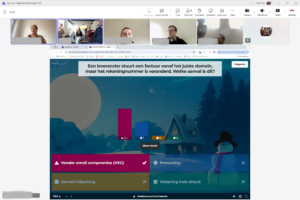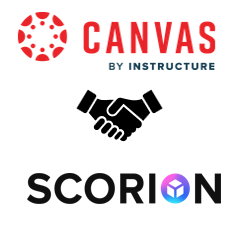Succesful implementation and adoption of a digital portfolio: 5 do’s
The effective use of a digital portfolio for personalized learning requires successful implementation and adoption by teachers and students. While this may seem obvious, as it applies to any digital system implemented in a large educational organization, the case of a digital portfolio supporting personalized learning is unique. It’s not just about implementing software, but often involves changing the educational concept, curriculum, or assessment methodology.
Experience shows that lack of support or insufficient attention to these aspects can lead to significant resistance during implementation and long after. Therefore, we’ve identified the five most important aspects contributing to the successful introduction of such a portfolio.
Research (1,2) indicates that a step-by-step approach with adequate guidance significantly increases the chances of successful adoption. Involving all stakeholders from the beginning is also crucial for building support (3). Furthermore, clear communication and maintaining an overview are essential.

Involve all stakeholders from the start
The first point is to involve all parties – teachers, students, educational managers, IT staff – in the implementation process early on. Organize sessions to gather input on expectations, questions, and potential obstacles. Then, form an implementation team with representatives from all levels as a sounding board.In some countries, there’s already considerable knowledge and experience with flexible educational concepts. For instance, in higher education in the Netherlands, the difference between a “classic” or “submission” portfolio and a portfolio for programmatic assessment or flexible education is becoming increasingly well-known. However, this may not be the case in all regions, so it’s important to assess the level of understanding within your specific context.
Develop a clear vision and roadmap
It’s essential to develop a shared vision on the role of the digital portfolio and align this well within the organization. A high level of involvement from decision-makers in the role, objective, and implementation is crucial (3). Practically, it’s advisable to document the vision in a concrete action plan with a roadmap, milestones, and responsibilities. Without commitment at the board level, successful implementation is impossible. This is particularly important because you will encounter resistance during implementation. Colleagues can be quite persistent in adhering to current work processes, as changes sometimes deeply affect education and their daily work. By considering this a given, an organization is better prepared.
Invest in training and support
For both teachers and students, the transition to a digital portfolio and personalized learning is a significant shift. It helps if every possible obstacle is avoided. For students, this is often different than for teachers. Students are generally more accustomed to using new systems. For them, it’s more important that the software aligns as much as possible with the software they already use. User-friendliness, good functionality on smartphones, and a clear content structure of the portfolio are important.
For teachers and staff, adapting to new software requires more attention. Good support, attention, communication, and training certainly help. Organizing this is relatively simple, so it’s a missed opportunity if an organization pays too little attention to it. An extensive training program and workshops for teachers, focusing on both technical and pedagogical aspects, is certainly helpful (1,2). For students, introductions, workshops, and online resources can be deployed, with sufficient guidance from coaches or ‘super users’ from the organization (2).
Start on a small scale
Developing EPAs is still an art. There are a number of tips and roadmaps for this.
It’s important to choose people who are fundamentally positive about the project for the project group. This doesn’t mean agreeing with everything; a critical attitude is certainly desired, but a negative basic attitude is not.Implement the digital portfolio not immediately across the entire institution, but start with a small-scale pilot with motivated ‘early adopters’ (3). Closely monitor progress, collect feedback, and adjust where necessary. Then gradually scale up to more programs and groups.
Communicate clearly and regularly
Clear and regular communication is essential throughout the entire process (3). Share clear information about the vision, planning, and expected impact in advance. During implementation, progress reports, newsletters, and FAQs can provide transparency. Celebrate successes and use ambassadors. Be open about challenges and setbacks as well.
Conclusion
By keeping an eye on involvement, knowledge sharing, gradual scaling, and good communication, you create the best opportunities for teachers and students to embrace the digital portfolio relatively quickly and easily as an instrument for personalized learning.



